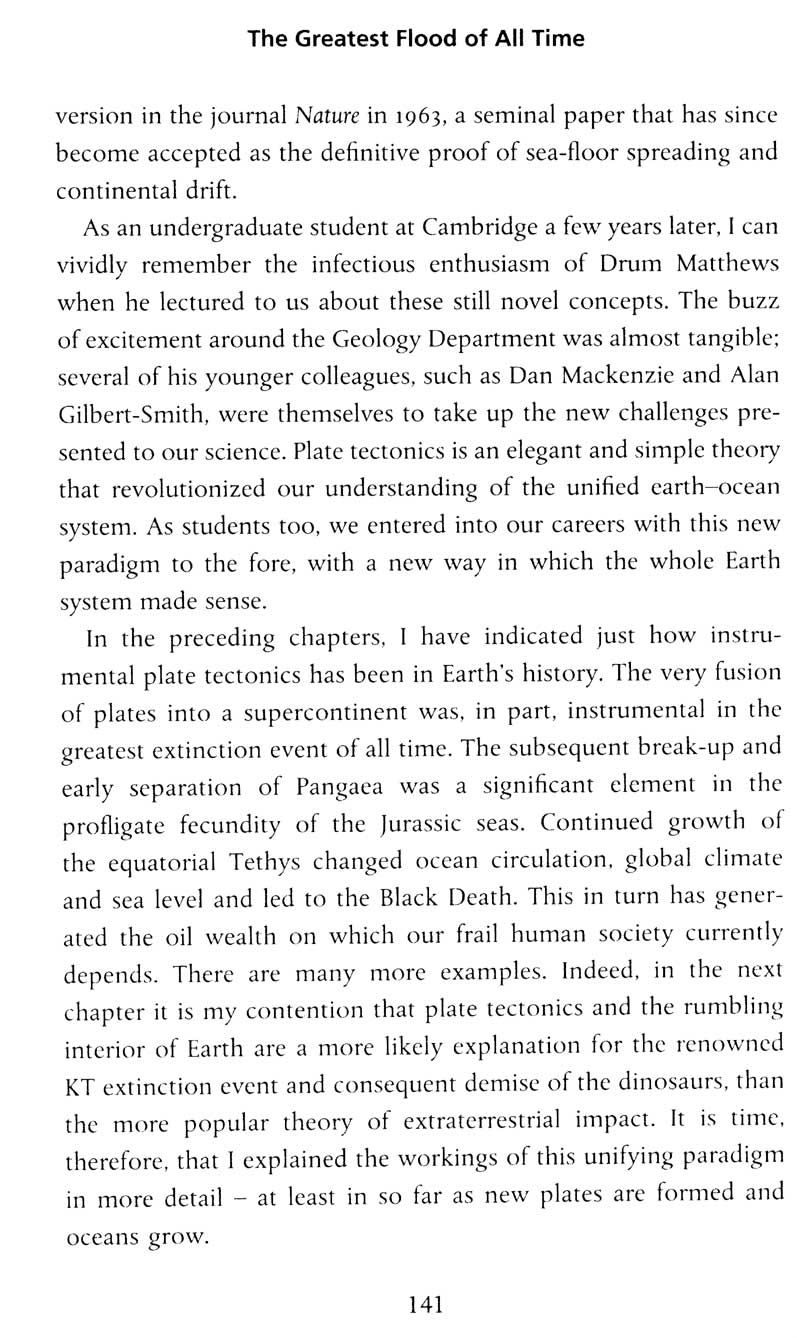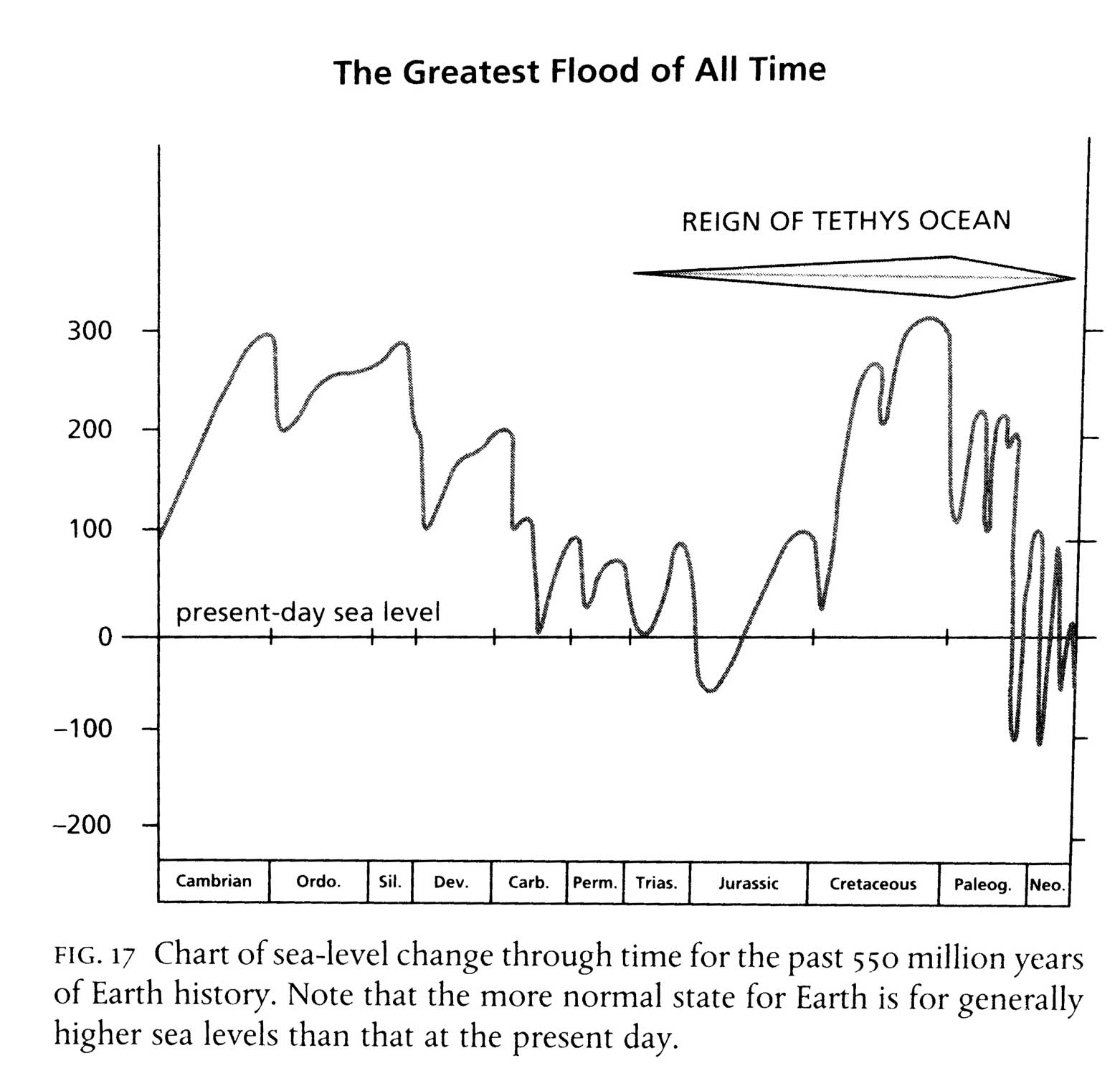 Vanished
Ocean: How Tethys reshaped the world
Vanished
Ocean: How Tethys reshaped the world
Author: Dorrik Stow
Publisher: Oxford University Press
2010
Price: £16.99 Hardback
ISBN: 9780199214280
This
is a book about an ocean that vanished six million years ago: the ocean
of Tethys,
named after a Greek
sea nymph. The oceans are important to climate and environment,
and therefore to life on Earth. The story of Tethys is also a story of
extinctions, and floods, and extraordinary episodes such as the virtual
drying up of the Mediterranean, before being filled again by a dramatic
cascade of water over the straits of Gibraltar.
 I
was asked to review this book when it was released two years ago. I struggled
through the book not because it was poorly written (it is well written
in a style similar to the very readable Richard Fortey) but because the
text contained so much information that it was hard to grasp all at one
time. Not surprising as it covered the geologic history of Planet Earth
(or rather the Tethys Ocean at its zenith covering 82% of the planet) from
250 million years ago to 5½ million years ago in a gigantic detective
story. And like the fictional crime stories on television I needed quite
a few diagrams stuck on the notice board to maintain my focus. The paperback
book contains a few useful monochrome diagrams as prompts rather than the
main content.
I
was asked to review this book when it was released two years ago. I struggled
through the book not because it was poorly written (it is well written
in a style similar to the very readable Richard Fortey) but because the
text contained so much information that it was hard to grasp all at one
time. Not surprising as it covered the geologic history of Planet Earth
(or rather the Tethys Ocean at its zenith covering 82% of the planet) from
250 million years ago to 5½ million years ago in a gigantic detective
story. And like the fictional crime stories on television I needed quite
a few diagrams stuck on the notice board to maintain my focus. The paperback
book contains a few useful monochrome diagrams as prompts rather than the
main content.

As a child of the fifties the unifying theme of the new Tectonic Plate
Theory was not explained very well to me on the chalkboard and dry text
books at school. It is the opinion of Dorrik Stow (and one shared intuitively
by me) that the movement of the continents, and oceans, were more important
that the "KT boundary event". Let the jury of readers decide (my comment).
A lot of evidence is presented to you and as a layman I was slightly overwhelmed
and I would need a foreman (teacher) as a guide. Better might be a lot
of big colour diagrams so I could get an overall view (available in atlases
of world prehistory). So the onus is on the writer who as an internationally
renowned geologist clearly knows his stuff to explain the case (the gradual
extinction of species rather than the abrupt loss of a few species of terrible
lizards: my words) and provides lots of interesting facts along the way.
e.g. how it was that the depth sounders first mapped the ocean floor.
I am glad I dipped into the book and I have not finished it yet. It
is only a cheap paperback and I think it is rather essential reading. And
each chapter is like a book on its own. The information is rather
condensed with the intensity of poetry so that make it difficult to take
in a lot at one time. The small index seems like an afterthought, or abridged,
and it was comprehensive but missed out on the first test of what I wanted
to look up. The contents does not lead to information retrieval very easily
if you want to revise on say the chalk seas: the Chalk-Flint cycles starts
on page 156 and quickly jumps to the Milankovitch Cycles, which may be
a jump too far for the casual reader who is not a scientist or does not
live on the chalk downs?
The paperback version is quite well made and does not fall to pieces
like some other well thumbed books.
It might deserve a coffee-table book second edition (with CD-ROM?) with
colour diagrams and rewritten in parts that requires a too big a jump (it
may miss out a link that the reader does not know) for the layman, and
for some scientists with fading memories.
Andy Horton
 I
was asked to review this book when it was released two years ago. I struggled
through the book not because it was poorly written (it is well written
in a style similar to the very readable Richard Fortey) but because the
text contained so much information that it was hard to grasp all at one
time. Not surprising as it covered the geologic history of Planet Earth
(or rather the Tethys Ocean at its zenith covering 82% of the planet) from
250 million years ago to 5½ million years ago in a gigantic detective
story. And like the fictional crime stories on television I needed quite
a few diagrams stuck on the notice board to maintain my focus. The paperback
book contains a few useful monochrome diagrams as prompts rather than the
main content.
I
was asked to review this book when it was released two years ago. I struggled
through the book not because it was poorly written (it is well written
in a style similar to the very readable Richard Fortey) but because the
text contained so much information that it was hard to grasp all at one
time. Not surprising as it covered the geologic history of Planet Earth
(or rather the Tethys Ocean at its zenith covering 82% of the planet) from
250 million years ago to 5½ million years ago in a gigantic detective
story. And like the fictional crime stories on television I needed quite
a few diagrams stuck on the notice board to maintain my focus. The paperback
book contains a few useful monochrome diagrams as prompts rather than the
main content.
 Vanished
Ocean: How Tethys reshaped the world
Vanished
Ocean: How Tethys reshaped the world
